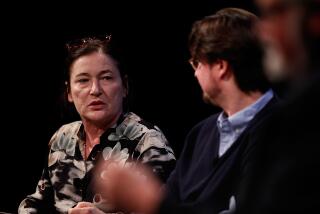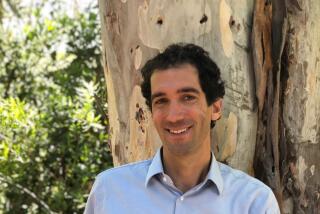Joyce Carol Oates is at her gothic best in ‘The Accursed’
- Share via
“The Accursed,” an astonishing fever dream of a novel, sets loose specters from the beyond to prey on innocent and guilty alike. But are there any real innocents in the diseased society Oates so scathingly depicts?
Making skillful use of gothic fiction’s time-honored conventions — demon lovers, haunted houses, guilty secrets, murderous transformations, supernatural visitations — the author repeatedly connects these unearthly manifestations to moral rot in the real world, in this case the “claustrophobic little world of privilege and anxiety” that is Princeton, N.J., in 1905 and ’06.
The president of Princeton University is Woodrow Wilson, embroiled in a power struggle with a popular dean over his desire to curb the eating clubs that dominate the school’s social life. But Wilson, one of many historical figures Oates incorporates into her story, has no interest in reform outside the university. He shares with the inhabitants of Princeton’s wealthy West End the belief that their entitlements are God-given signs of their moral superiority. A brutal lynching in nearby Camden is no concern of theirs, nor could the strikes that threaten their investments in Pennsylvania possibly be anything other than “anarchist and atheistical outrages.”
The “abduction” of 19-year-old Annabel Slade on her wedding day marks the official beginning of the Curse that reduces to ashes every smug assumption of this blinkered elite. Annabel flees from the altar into the arms of Axson Mayte, a seeming Southern gentleman soon revealed as prince of “the Bog Kingdom,” a hellish domain where she suffers vile humiliations while her lover sneers, “Where is your Slade pride now?” The Curse also strikes down three other grandchildren of Princeton patriarch Winslow Slade, a Presbyterian minister convinced that a terrible sin of his youth is the cause of their afflictions.
But the Slades are not the only accursed. Events take an increasingly lurid turn after Annabel’s disappearance: Respectable citizens become vampires, spouses murder their mates and parents attack their babies. They are frequently beckoned toward these monstrous deeds by the sinister Count von Gneist, who has topaz eyes like Axson Mayte’s. Another seemingly supernatural visitor (with those same golden-brown eyes) is the society hostess Mrs. Peck, who does her seductive best to tempt President Wilson from the path of righteousness.
Oates gives these otherworldly forces a palpable physical reality, while simultaneously suggesting that the ghostly voices whispering in her characters’ ears come from someplace deep within. Her tapestry of multiple narratives includes letters and diaries seething with female rage and male unease.
Princeton’s privileged women are not necessarily happy with their role as pampered, passive ornaments, its men not necessarily confident that their authority is as unquestionable as they pretend.
Is the Curse a demonic visitation, or a bloody outburst of the collective unconscious? Is it possible, as Upton Sinclair (another real-life participant in the fictional action) wonders toward the end, that “Armageddon might be closer at hand than the Socialist prophets believed”? We might be more inclined to believe this if Oates hadn’t chosen to portray her socialist figures as either sanctimonious prigs (Sinclair) or drunken racists (Jack London, in a hilarious scene in a Times Square restaurant).
“The Accursed,” originally drafted in the 1980s as the fourth in Oates’ series of neogothic novels, shares with “Bellefleur,” “A Bloodsmoor Romance” and “Mysteries of Winterthurn” an unflinching acknowledgment of human violence and cruelty, particularly as they play out in American history.
A few of the more decent Princetonians get modestly happy endings — in a socialist colony, as it happens — once the Curse is apparently lifted by the cleverness of one major character and the gruesome but deserved death of another. The ineradicable nature of the Curse, however, becomes manifest in the closing pages, which contain some of Oates’ most remarkable prose and spookiest philosophy.
Dostoevsky is the only other novelist who comes to mind as capable of creating the lacerating confession phrased in majestic biblical cadences that Oates delivers here. Her scarifying vision of divine order and its bitter earthly consequences recalls his famous “Grand Inquisitor” scene, with a sharper political edge. It’s the mark of artistry grown ever more assured over the course of Oates’ 50-year career that this metaphysical outburst flows naturally from the unnerving parade of ghastly events that precedes it.
“The Accursed” triumphantly fulfills its gothic mandate to make our skin crawl, but it also accomplishes the much more difficult task of frightening us with its ideas.
Smith is the author of “Real Life Drama: The Group Theatre and America, 1931-1940,” which will be reissued in July.
The Accursed
A Novel
Joyce Carol Oates
Ecco: 688 pp., $27.99
More to Read
Sign up for our Book Club newsletter
Get the latest news, events and more from the Los Angeles Times Book Club, and help us get L.A. reading and talking.
You may occasionally receive promotional content from the Los Angeles Times.






